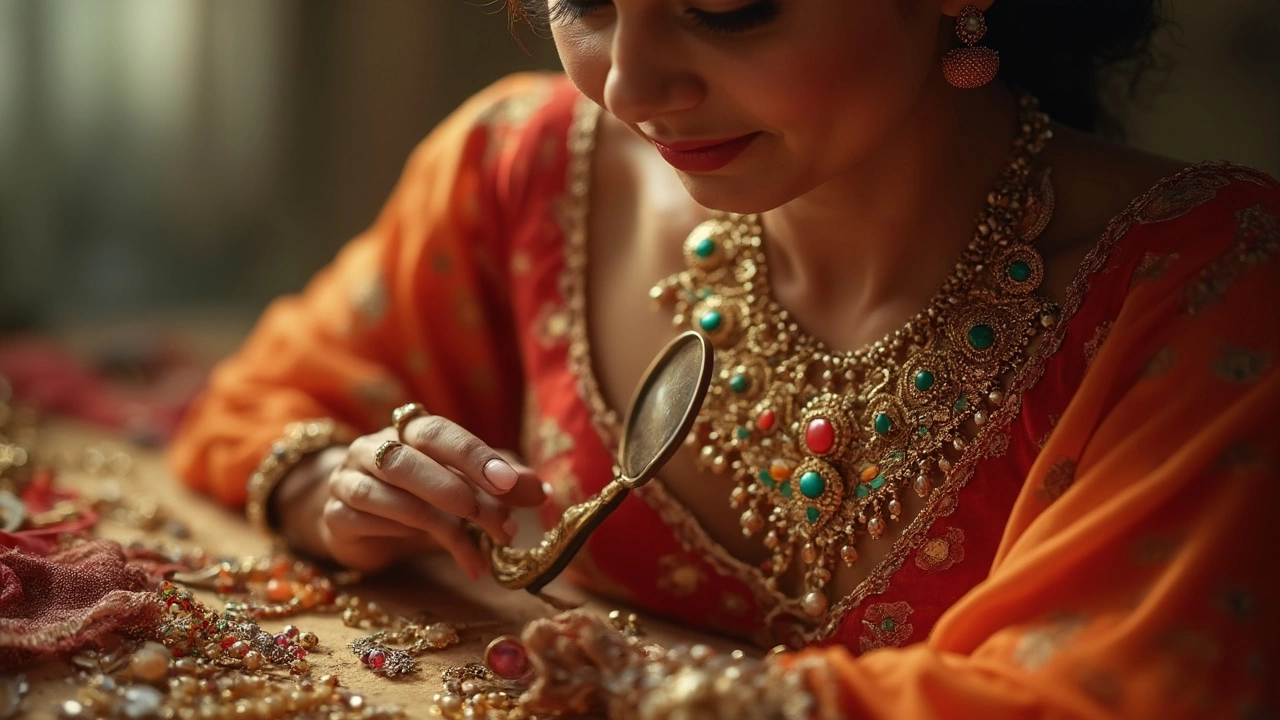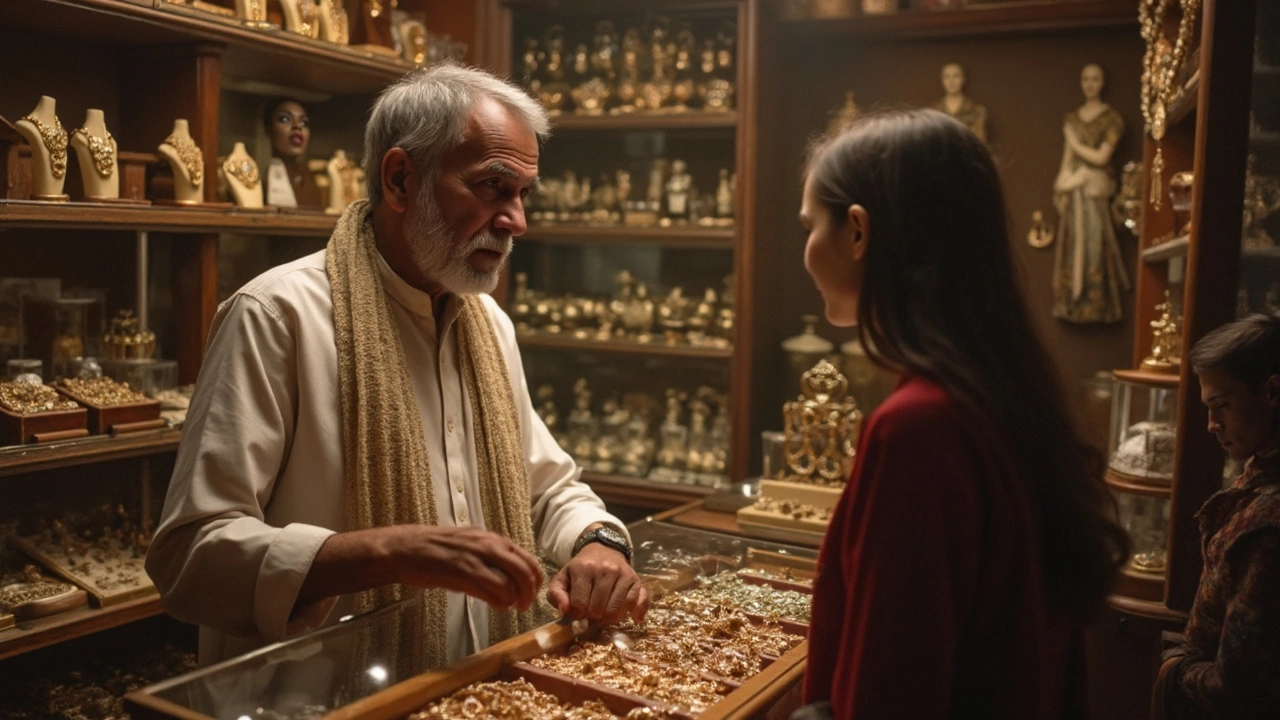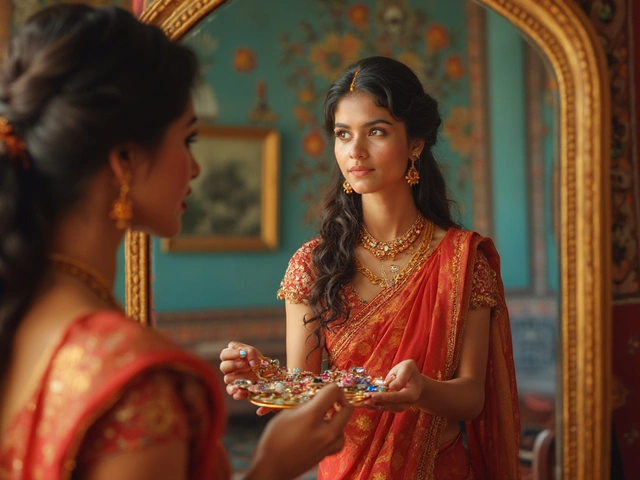
You'd be surprised how many people walk right past small fortunes without even realizing it. Old jewelry boxes tucked in grandma's closet? They could be holding pieces that only get more valuable as time passes. But here's the catch—finding those gems isn't about luck. It's all about knowing exactly what to look for, down to the smallest detail.
Forget guessing based on shine or weight. Real value hides in the stuff that most folks ignore—tiny marks, the way a clasp clicks, even the weird lettering on a worn-down tag. Those little things? Big deal, especially if you're hoping to see your investment grow. You don't have to be some expert to spot the clues, but you do need to pay attention and know where to start.
If you've ever felt lost looking at trays of old rings or tangled necklaces at estate sales, trust me—you're not alone. Most of us are easily thrown off by surface sparkle or trendy shapes. But if you want pieces that get better with age (and fatter wallets), learning a few insider tips will help you separate true treasures from flashy imposters. No boring lectures—just clear, practical advice you can actually use when you're out hunting or sorting through family keepsakes.
- What Really Sets Valuable Antique Jewelry Apart
- Key Clues: Materials, Marks, and Craftsmanship
- Avoiding Traps: Spotting Fakes and Pitfalls
- How Tastes and Trends Predict Future Value
What Really Sets Valuable Antique Jewelry Apart
People think anything old is valuable, but that's just not true with antique jewelry. Some pieces survive for ages and barely budge in price, while others skyrocket. It all comes down to a few key things that separate ordinary vintage finds from investments that actually hold—or gain—value.
First, age matters, but not on its own. For jewelry, “antique” technically means 100 years or older, while “vintage” is usually 20-99 years. But just because something is old doesn’t make it special. Desirable antique pieces are often connected to iconic design eras—think Victorian (1837–1901), Art Deco (1920s–1930s), and Edwardian (1901–1910). Each era brought distinctive looks, materials, and techniques people still chase today.
Rarity drives value like nothing else. Limited runs, unusual materials (like natural pearls or high-karat gold), or unique handcrafted details all boost a piece’s profile. When you talk about demand, signed pieces by major names—Tiffany & Co., Cartier, Van Cleef & Arpels—can multiply the value overnight. These brands have a track record of staying hot at auction and in private sales.
Condition is another game changer. If a ring is from 1880 but beat up or Frankenstein’d with new parts, collectors will turn up their noses. Original condition, or carefully done restoration, matters a lot. Savvy collectors want the story to be intact—from the clasp to the stone setting. Even tiny chips or replaced stones can make or break future value.
- Provenance is gold. If a piece comes with old boxes, paperwork, or a trail that links it to someone famous, the value can jump. There was a case in 2023 where a basic diamond brooch tripled in value just because it had paperwork linking it to an heiress’s estate.
- Quality of materials: Real gold, platinum, natural gems, or rare enameling hold up much better price-wise than plated metal or synthetic stones that flood markets nowadays.
- Market trends: If certain antique jewelry styles are featured in runway shows or pop culture, prices can spike fast. But long-term value usually follows uniqueness and story, not sudden fads.
| Type | Multiplier for Signed/Major Designer | Impact of Damage/Alteration |
|---|---|---|
| Victorian Ring | 2–3x | Up to -50% |
| Art Deco Bracelet | 3–5x | Up to -60% |
| Midcentury Brooch | 2–4x | Up to -40% |
So next time you're looking at a possible buy, ask yourself: Is it rare? Is it from a known era or maker? Has it survived in great shape? If it ticks those boxes, chances are you’ve spotted something special in the world of antique jewelry.
Key Clues: Materials, Marks, and Craftsmanship
If you want to spot antique jewelry or vintage jewelry worth more money down the line, you have to get nosey with the details. The first thing to check: materials. High-value pieces are almost always made from solid gold, platinum, or sterling silver. Gold plating? That’s usually a dealbreaker if you’re aiming for long-term growth. Of course, exceptions exist, like certain signed costume pieces from the 50s or 60s—think Chanel or Trifari—those sometimes swing above their weight class.
Don't skip gemstones. Old-cut diamonds, natural sapphires, and untreated rubies often pull way bigger numbers at auction compared to their modern, mass-produced cousins. If you spot something that looks cloudy or has obvious glue marks, it's probably not worth banking on.
- Check for hallmarks: Flip that ring or brooch over—see a tiny stamp, number, or symbol? That’s a hallmark. British silver almost always carries a city mark plus a date letter. French gold typically shows an eagle’s head if it’s 18k. No stamps at all? Watch your step; it could be low-value metal or a reproduction.
- Look for maker’s marks: The higher end the piece, the more likely there’s a tiny logo or initial from the maker. Cartier, Tiffany, and Fabergé are obvious ones, but even less famous designers, if collectible, can add huge value.
- Study the craftsmanship: Hand-cut settings, milgrain details, and even signs of wear can actually boost value—flaws show the piece is legit and not churned out last year. Machine-made settings after the 1950s? Generally not as interesting to serious collectors.
Here’s a quick cheat sheet you might find handy:
| Material | Typical Mark | Best Era |
|---|---|---|
| 18k Gold | 750, Eagle’s Head (France) | Edwardian, Art Deco |
| Sterling Silver | 925, Lion Passant (UK) | Georgian, Victorian |
| Platinum | PLAT, PT950 | Art Deco, Retro |
As one of the lead experts at Bonhams once said,
“People always want a signature or a hallmark, but the real secret is turning the thing over and looking at how it’s built. The difference is in the details.”So, when hunting for that next hidden gem, go beyond the pretty face; flip it, squint at the marks, and run your finger over the edges. Old-school care and rare materials almost always put you ahead of the game when it comes to picking jewelry investment pieces that can stand the test of time.

Avoiding Traps: Spotting Fakes and Pitfalls
The antique jewelry world isn’t all hidden gems. It’s also full of clever tricks, knock-offs, and pieces made to fool even sharp-eyed buyers. Getting burned once is bad enough, but buying fakes thinking they’re investments? That stings for years.
First off, always check the basics. Real antique jewelry almost always shows signs of use. If a piece that’s supposedly a hundred years old looks flawless or has zero wear on prongs or clasps, something’s fishy. Modern replicas can look shiny, but true vintage jewelry gets little dings and soft edges over time. It should feel like it’s actually been around the block.
Hallmarks and signatures save a lot of guesswork—if you know what they mean. Don’t just trust that any stamp means the piece is real. For example, genuine Georgian or Victorian rings rarely have standardized gold marks, but later pieces from the 20th century usually do. Also, lots of fakes have made-up or poorly engraved marks; check reference guides or online databases to compare the style and placement of hallmarks.
- Use a jeweler’s loupe to inspect the settings. Antique settings were built by hand and may not be perfectly symmetrical. Mass-produced pieces usually look too uniform and tidy.
- Check the stones. Older cuts are less precise—think chunky, open-back settings and rose cuts, not laser-sharp round brilliants you see today.
- Test the metal. If someone swears by "solid gold" but the surface wear shows a lower shade underneath, you’re probably looking at gold-plated or costume jewelry.
- Weigh the piece in your hand. Antique jewelry often feels heavier than it looks because old gold and platinum are denser than modern alloys.
Want some real-world stat? The Gemological Institute of America reported in 2022 that more than 30% of "antique" diamond rings submitted to them for review were actually modern reproductions. The difference was mostly in how they were made—not in flashy looks.
If you’re still unsure, don’t be shy about asking for paperwork or provenance. Trusted sellers won’t get nervous if you want documentation. Online, watch for sellers who use vague photos, refuse close-ups, or avoid answering questions. If a deal sounds way too good, it probably is.
The market’s gotten trickier, but once you know these basics, spotting duds gets easier. And your chances of landing a truly valuable piece of vintage jewelry only go up from there.
How Tastes and Trends Predict Future Value
If you're thinking about investing in antique jewelry or vintage jewelry, you can't ignore trends. Styles aren't random; they cycle. What your grandmother wore at her wedding could suddenly pop back into style because of a celebrity post or TV show. Look at Art Deco pieces—ten years ago, most people didn’t care, but then designers started using those bold lines and geometric shapes again. Now Art Deco rings and necklaces are gold for collectors and keep climbing in price.
What's hot isn’t just about looks. Social shifts push demand, too. Eco-conscious shoppers want upcycled or recycled pieces, so older jewelry made from high-quality gold or platinum is now extra desirable—especially if gemstones are untreated or natural. Another tip: signed pieces (jewelry marked by makers like Cartier, Van Cleef & Arpels, or Tiffany) often skyrocket in value when trends shift toward recognizable names.
Let’s break down some specifics that make certain designs or periods more likely to rise in value:
- Mid-century modern jewelry—clean lines, unique settings. Surged in popularity thanks to TV series like Mad Men.
- Victorian mourning jewelry—one-of-a-kind, deeply personal. Collectors and museums chase these when vintage fashion cycles hit the runway.
- 1960s and ‘70s pieces—colorful gemstones and bold designs. The current “retro” comeback means there’s rising demand.
Pay attention to what designers are copying from the past. If brands are launching new lines inspired by a certain era, you can bet that era’s original pieces are about to go up in value. Here’s a quick example from recent auction house data:
| Style/Era | % Value Increase (2018-2024) |
|---|---|
| Art Deco | +40% |
| Mid-century Modern | +34% |
| Victorian | +28% |
Then there’s the celebrity effect. A single star wearing a 1920s-style brooch at a big event can send prices shooting up for months. If you can spot these triggers coming, you’ll be ahead of the crowd.
So, keep an eye out for what’s trending on social media, red carpets, and in designer collections. Match that to pieces you’re eyeing, and you’ll have a much better shot at owning jewelry investment items that are both beautiful and only getting more valuable.


